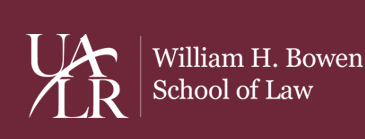Publication Date
2010
Abstract
Of the many civil rights and social justice issues that continue to cloud United States race relations, one persists in dividing parties: the use of American Indian mascots and imagery by collegiate and professional athletic teams. Scholars and academics weigh in annually on this divisive issue, while certain university administration officials vigorously defend continued use of Native American mascots and monikers at their institutions. Across the United States, various university officials and alumni debate the continued use of mascots such as the “Fighting Sioux,” the “Running Utes” and “Chief Illiniwek.”
In a broader context, the mistreatment and abuse of American Indians and, for that matter, discrimination against indigenous populations around the world, continue to receive widespread attention. Recently, federal governments in Canada and Australia have acknowledged historical abuse of native populations and have offered official apologies and regrets. Though belated, these governmental acknowledgments of racism, discrimination, hostility and abuse serve as a reminder that indigenous populations, particularly American Indians, suffered incredibly at the hands of white oppressors. Badges, indicia and reminders of this abuse by the United States government and its white citizens remain today.
The National Collegiate Athletic Association (“NCAA”) recognized and acknowledged this holdover effect of discrimination and abuse in the summer of 2005 when it determined that some college and university mascots, monikers and images have the potential to offend American Indians. Those teams with potentially offensive and abusive mascots and imagery included the Florida State Seminoles, the Central Michigan Chippewas, the North Dakota Fighting Sioux, and the University of Illinois Fighting Illini. After the NCAA described these mascots as offensive to Native Americans, the organization declared that these schools could no longer use their mascots in postseason athletic contests. In its policy promulgation, the NCAA declared that schools with offensive mascots and imagery could not display their logos on the court or field or on a uniform, nor could they allow students to don the mascot costumes on the sidelines during any postseason play.
As might be expected, the NCAA’s policy has been controversial and has captured the attention of academics and scholars. While the NCAA deserves credit for tackling this divisive issue in an area of consistent debate and contention for the past three decades, the current policy only begins to address the issue and ultimately fails to find a reasonable solution. Instead, this policy can be viewed as the first half-step needed to resolve this problem of abusive and hostile imagery used by NCAA member institutions. If American Indian mascots are genuinely hostile and abusive, then they should be completely eradicated. A mascot cannot be abusive in the postseason but non-abusive in the regular season. If a mascot is abusive, as the NCAA has deemed it to be, then there is no place for it amidst America’s academic institutions. The restriction of the NCAA’s new rule to postseason play is incongruous. In adopting this new policy, the NCAA has chosen to straddle the fence rather than fully addressing the problem of offensive and hostile American Indian imagery.
This article suggests that the NCAA should completely ban the use of Native American mascots that it has already deemed hostile or abusive. In arriving at this conclusion, the article seeks to provide a comprehensive examination of the history and circumstances that led the NCAA to finally take a stand on one of the divisive civil rights issues of our time.
Document Type
Article
Recommended Citation
andré douglas pond cummings & Seth E. Harper, Wide Right: Why the NCAA's Policy on the American Indian Mascot Issue Misses the Mark, 9 U. Md. L.J. Race, Religion, Gender & Class 135 (2009).
Included in
Civil Rights and Discrimination Commons, Indigenous, Indian, and Aboriginal Law Commons, Law and Society Commons
Available at: https://lawrepository.ualr.edu/faculty_scholarship/242
